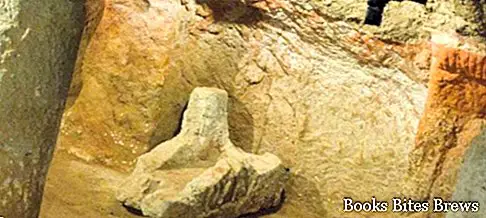What to see in Tuscania, itinerary for a guided tour including the main monuments and places of interest, including the Duomo, the Church of Santa Maria Maggiore and the Queen's Tomb in the Etruscan necropolis.
Tourist information
Located in Lazio in the province of Viterbo, on a promontory of the Volsini Mountains, Tuscania is famous for the processing of leather, wood and terracotta.
Formerly an Etruscan city, it was a Roman settlement of considerable importance, up to a period of decline following the fall of the empire and the barbarian invasions.
After being a reason for contention between various feudal families, it passed under the dominion of the church in 1443.
The Church of Santa Maria del Riposo, built in the Renaissance style on the ruins of a previous building, is characterized on the outside by a remarkable portal, while inside, worthy of note, are the wooden altarpiece of the high altar with interesting paintings , probably the work of Perin del Vaga, and a Madonna made by Pastura.
In the cloister included in the adjacent convent there are remarkable frescoes from the 1600s.
Inside the monastery there is the Archaeological Museum, which brings together the finds that came to light concerning the ancient Roman city, the Etruscan necropolises and medieval houses.
The Church of Santa Maria della Rosa, dating back to the fourteenth century and featuring a facade with three entrance portals with the bell tower on the side, includes three refined naves inside the refined table depicting the Liberating Madonna.
What see
The Duomo, rebuilt in 1700 over the remains of a previous construction, has maintained the facade of the past, while in the interior with three naves there is a remarkable fifteenth-century tabernacle.
The Church of Santa Maria Maggiore, located on the San Pietro hill, was erected in the eighth century on the site where a Romanesque building once stood.
Rebuilt in the twelfth century, it is one of the most beautiful Romanesque churches at the regional level, with a solid tower on the left and a facade enriched by three elegant portals.
Recommended readings- Anagni (Lazio): what to see
- Lazio: Sunday day trips
- Vetralla (Lazio): what to see
- Ciociaria (Lazio): what to see in the historic region
- Alatri (Lazio): what to see
In the interior with three naves, with columns dominated by very particular Romanesque capitals, there is a magnificent baptismal font of the immersion type, dating back to the thirteenth century, a pulpit of 1200 and interesting fourteenth-century frescoes in the apse area.
Nearby is the Church of San Pietro, dating back to the eighth century and rebuilt in the twelfth century, with a beautiful facade of the thirteenth century including a portal surmounted by a loggia and a rose window, characterized by refined sculpture decorations.
In the interior with three naves, in a mixed early Christian and Romanesque style, there is the crypt with nine naves, supported by 28 columns.
Among the various works of art preserved here, the fourteenth-century fresco of the Crucifixion, some sarcophagi and two cibori stand out.
In the surroundings of the town there are several Etruscan necropolises of considerable interest, including the Queen's Tomb.




